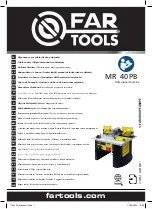
Chapter 2
Installation
2
EtherFast® 16-Port and 24-Port 10/100 Ethernet Switches
Chapter 2:
Installation
Planning Your Network
Building a Fast Ethernet network involves a few more
topology rules in addition to 10BaseT network rules.
These rules specify distance limitations and cabling
specifications. Data loss, collisions, and other network
problems causing down time are likely to result if the rules
below are not followed.
Use UTP Category 5 (EIA 568B, Cat 5) ethernet cabling
•
with four twisted-pair wires and RJ-45 tips for all Fast
Ethernet connections.
Use the chart below to position any switches, hubs
•
and workstations.
From
To
Max. Distance
Switch
Switch or Hub*
100 meters
Hub*
Hub*
5 meters
Switch or Hub
Workstation
100 meters
*Hub refers to any type of 100Mbps hub, including regular hubs and
stackable hubs. A 10Mbps hub linked to another 10Mbps hub or a
10/100 hub can span up to 100 meters (328 feet).
No more than two hubs should be uplinked in a row in
•
a Fast Ethernet network. A set of stacked hubs, which
must be stacked with a stacking cable, counts as one
hub or node on the network.
In Fast Ethernet, an Ethernet Switch acts as a repeater,
•
regenerating data signals before passing them on to
the next device. Hubs cannot act as repeaters.
Configuration A shows one possible way to set up an
Ethernet Switch in a Fast Ethernet environment. Note
that an Ethernet Switch requires UTP Category 5 network
cabling for all its connections, like all Fast Ethernet network
hardware.
All of the workstations below can access all resources
on the network - 10Mbps users can access the 100Mbps
nodes, and vice versa. While allowing the 10Mbps and
100Mbps segments to communicate, an Ethernet Switch
optimizes data traffic by switching the data packets to
their destination through the quickest route possible,
which improves performance up to 80% even on the
faster 100Mbps network segment.
Configuration A






































